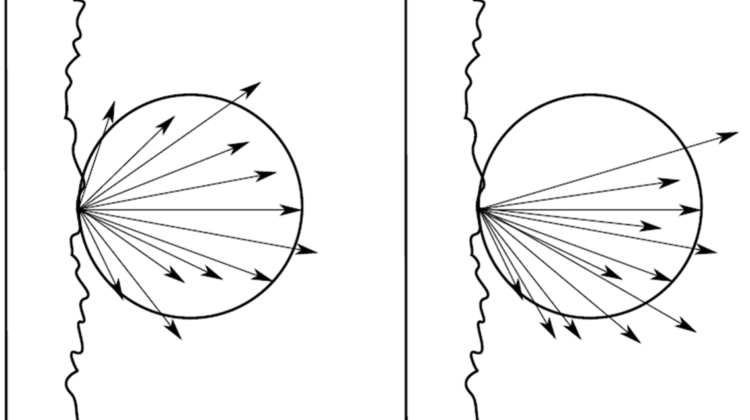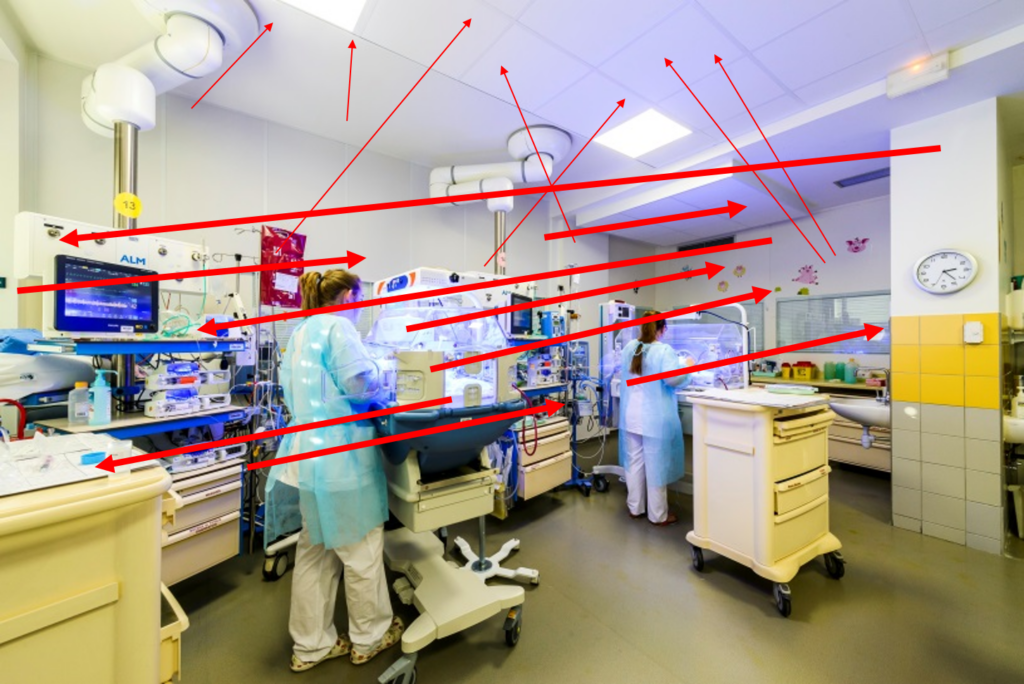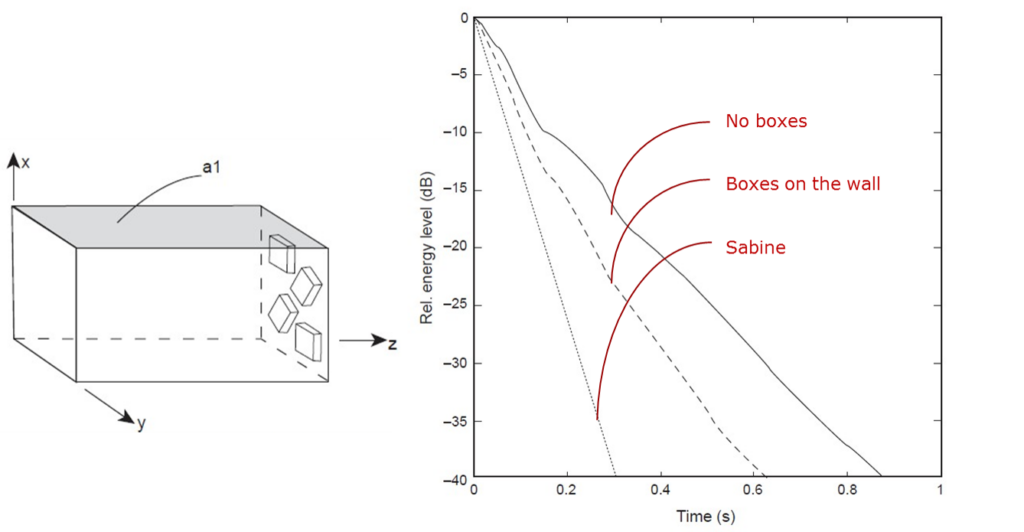
Rooms with acoustic ceilings
Today we see a lot of public rooms with acoustic ceilings – and that is good! But in these rooms especially the reverberation time and speech clarity does not only depend on the absorption material in the room. Scattering plays an important role for the room acoustic design and therefor furniture and ‘objects’ in the room should be taken into consideration when predicting room acoustics.
In rooms with absorbent ceilings, we distinguish between two situations the “steady-state” and the decay situation. In the case of steady-state, a sound source emits sound continuously, with the room thus having a constant level of sound. Even in rooms with absorbent ceilings, the sound is more or less diffuse at steady state.
Reverberation
In the case of reverberation (which we will have in all rooms except laboratories), the situation is somewhat more complex than for steady-state. When the sound source is turned off, the sound waves that hit the ceiling absorber will disappear much more quickly than the sound waves that propagate almost parallel to the ceiling and floor.

This is of course related to the fact that much of the sound energy that reaches the ceiling is absorbed. If there are no furnishings in the room, and if the walls and floor are plane surfaces with a low level of absorption, the reverberation time will be determined by the ceiling absorption for grazing incidence and the walls’ and floor’s absorption.
Grazing and non-grazing sound waves
Grazing incidence means here that the sound waves propagate almost parallel to the ceiling and floor. The ceiling’s absorption factor for grazing incidence is often significantly less than the absorption factor that is normally stated. The reverberation time here will be much longer than could be expected from a calculation using Sabine’s formula.
When the room is furnished, the grazing sound field will be split up and some of the horizontal energy will be transmitted up into the ceiling absorber. The effect of this sound scattering is that the reverberation time will be shorter.

In rooms where the main absorption is in the ceiling, the effect of non-absorbent furnishings will therefore also be expressed as increased absorption. To calculate the reverberation time in a room with an absorbent ceiling, the following must be taken into consideration:
- Absorption factor for grazing incidence for the ceiling absorber.
- The absorption effect of sound-scattering and sound-absorbing furnishings
- Absorption factor for walls and floor
- (Air absorption)
Calculation tools
Up until today a lot of online platforms calculation tools have all been based on the Sabina formula. These tools have rarely included scattering when estimating room acoustics – which can lead to inaccurate calculations.
A new acoustic calculation tool is now available and published by Ecophon – and it does not only include scattering it also utilize air flow resistance as input data which make it possible to calculate correctly also in non-diffuse spaces. You can try the calculation tool here.
It does calculations not only on reverberation time – but also on C50 and Room Gain. Read about why several acoustic descriptors are needed to secure at good sound environment.

